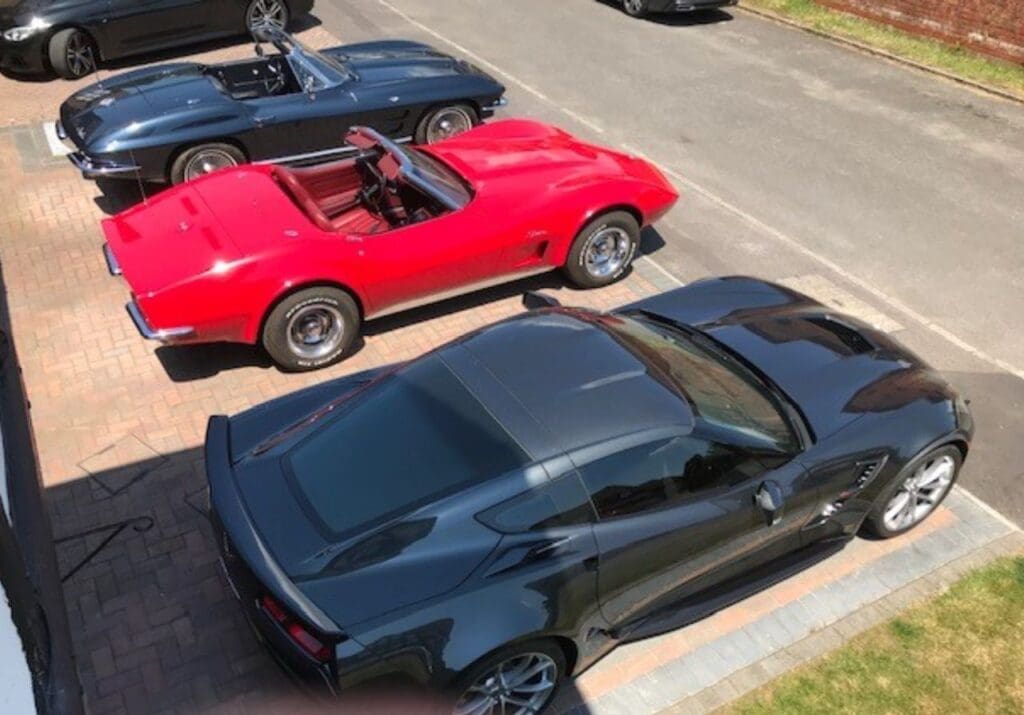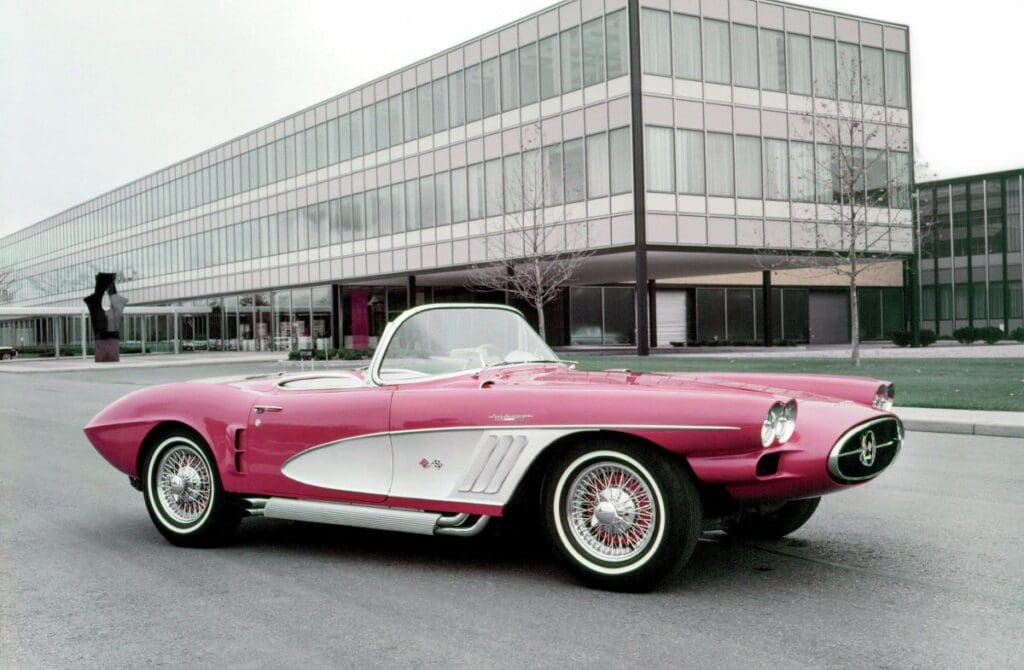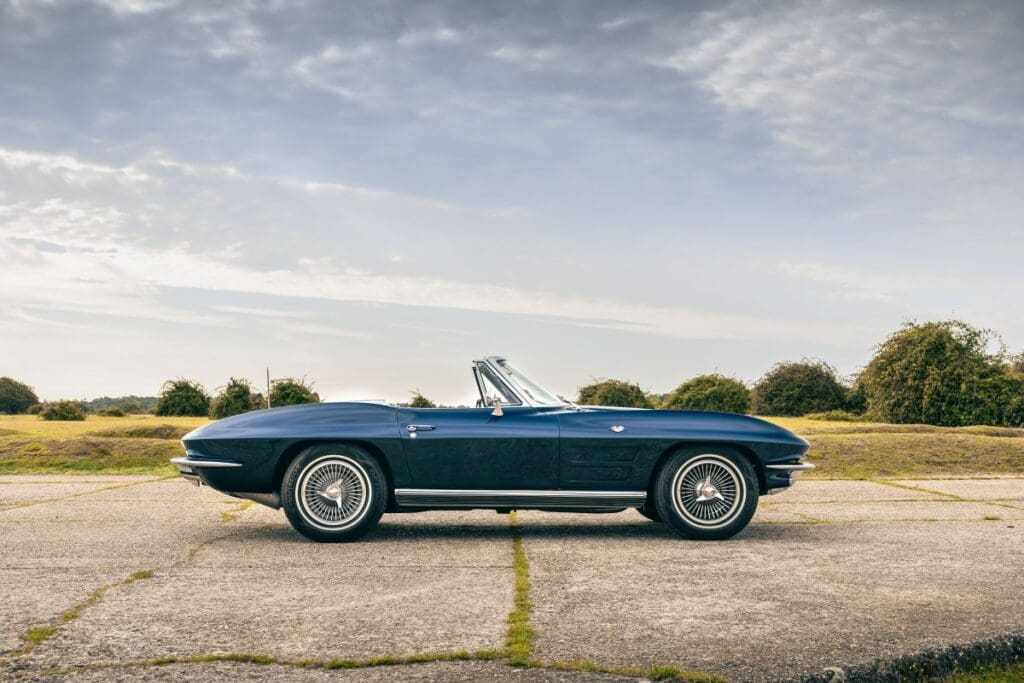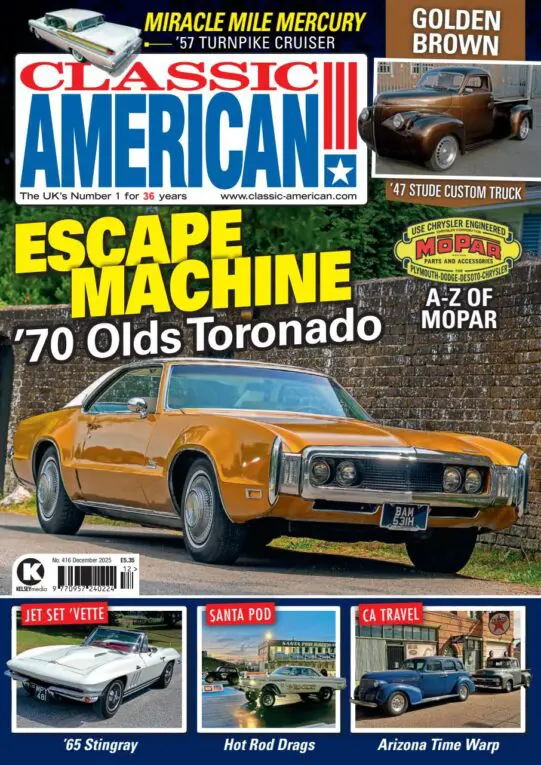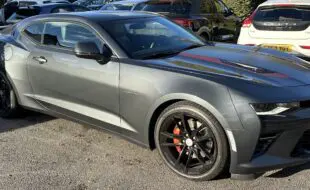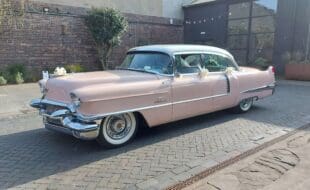While we love originality here at Classic American, there’s also a lot to be said for subtle improvements that make a classic more user-friendly, such as the various hidden upgrades under Mick Nash’s stunning 1963 Corvette…
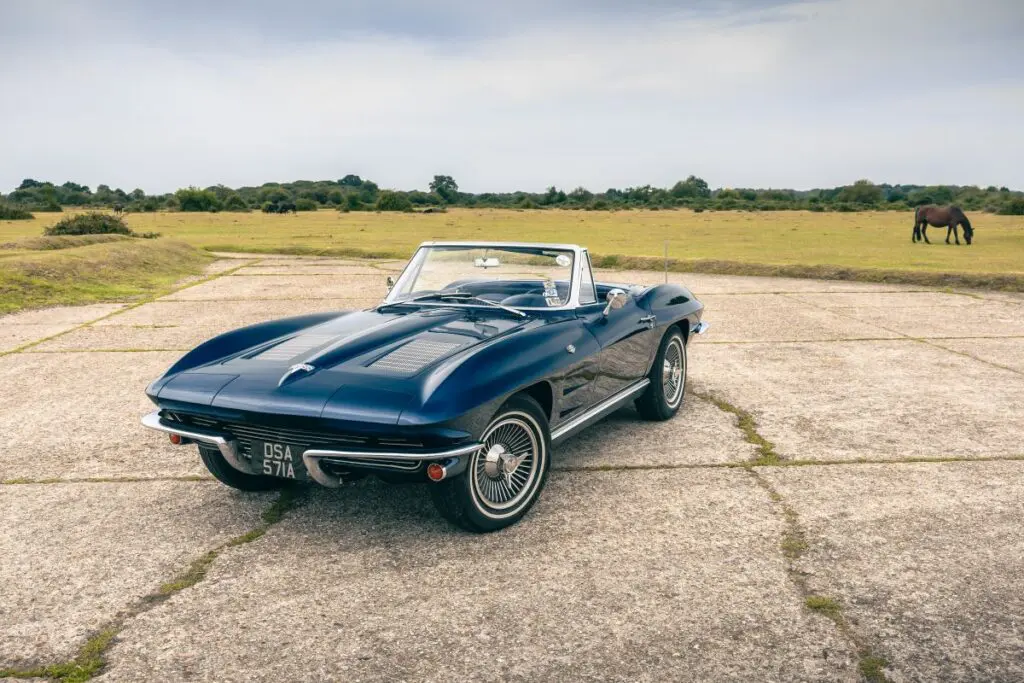
Words: Mike Renaut Photography: Jonathan Fleetwood
Mick Nash is a lucky fella. Not only does he own this gorgeous 1963 Corvette convertible, but he also has a 1973 convertible and a 2018 Grand Sport to choose from too. “I sold a Cobra replica to buy this 1963,” explains Mick. “I wanted a ‘real’ car and while the Cobra was great, I’d always fancied a C2 Corvette.” With only a brief search online, in December 2020 Mick got a surprise: “I live in Hampshire and this Corvette was for sale less than 10 minutes away. I had no idea there was one so close by.”
Upon arrival, Mick was greeted by the vendor’s neighbour. “He was selling the Corvette on behalf of the owner, which was a bit unusual, but the car looked great. During the following week he emailed over various paperwork and everything looked good. In fact, the only thing he wouldn’t do was to budge on the asking price. I made offers, but he wasn’t having any of it,” laughs Mick.
Enjoy more Classic American reading in the monthly magazine.
Click here to subscribe & save.
Having agreed to buy the Corvette, Mick then got to meet the seller. “He had a gigantic showroom full of stunning cars; a Rolls-Royce Silver Ghost, a La Ferrari… He was a really nice, down-to-earth bloke. He took me out in the Corvette, then let me drive it. I’d particularly been after a convertible Corvette since I prefer them and so does my wife Tina, but beyond that I didn’t really have any specification in mind regarding engine size or colour. The ’63 came with the optional hardtop which is a useful addition and I was more than happy.”
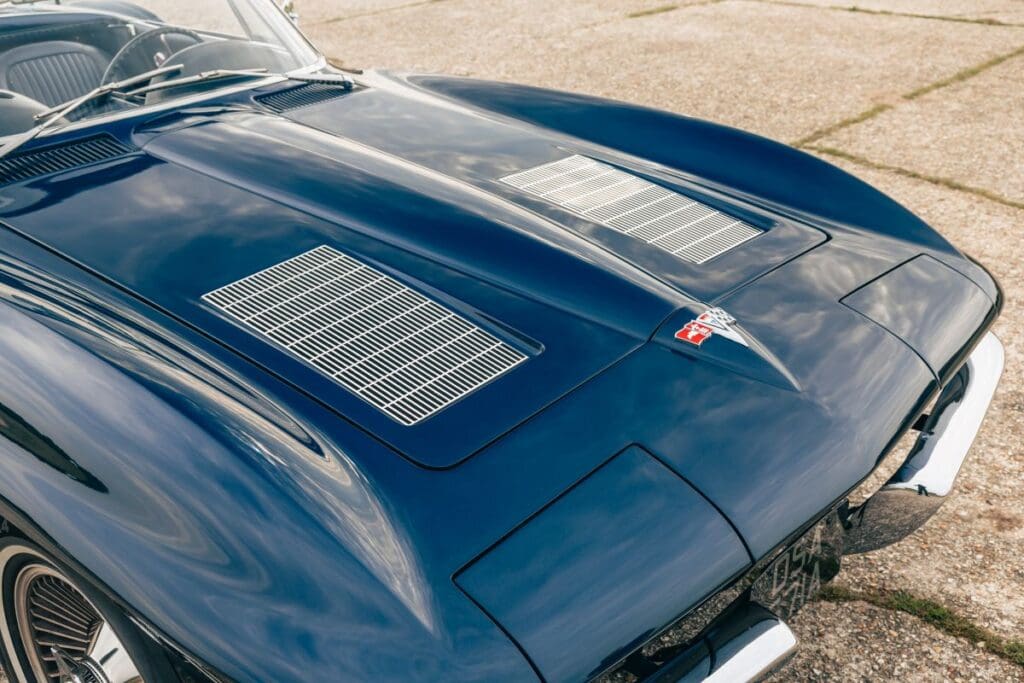
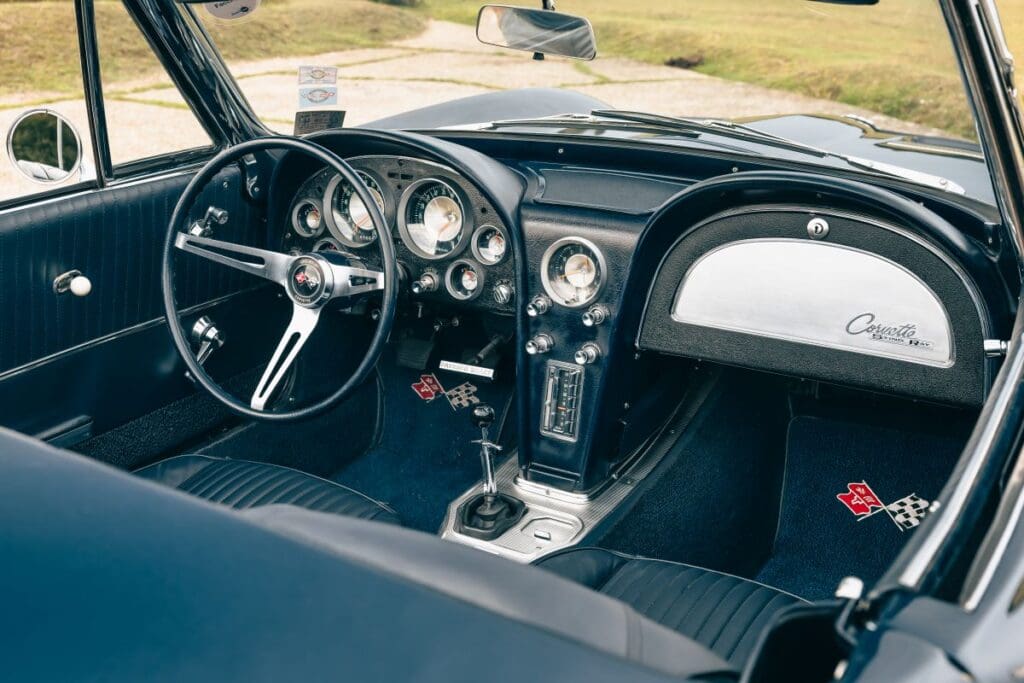
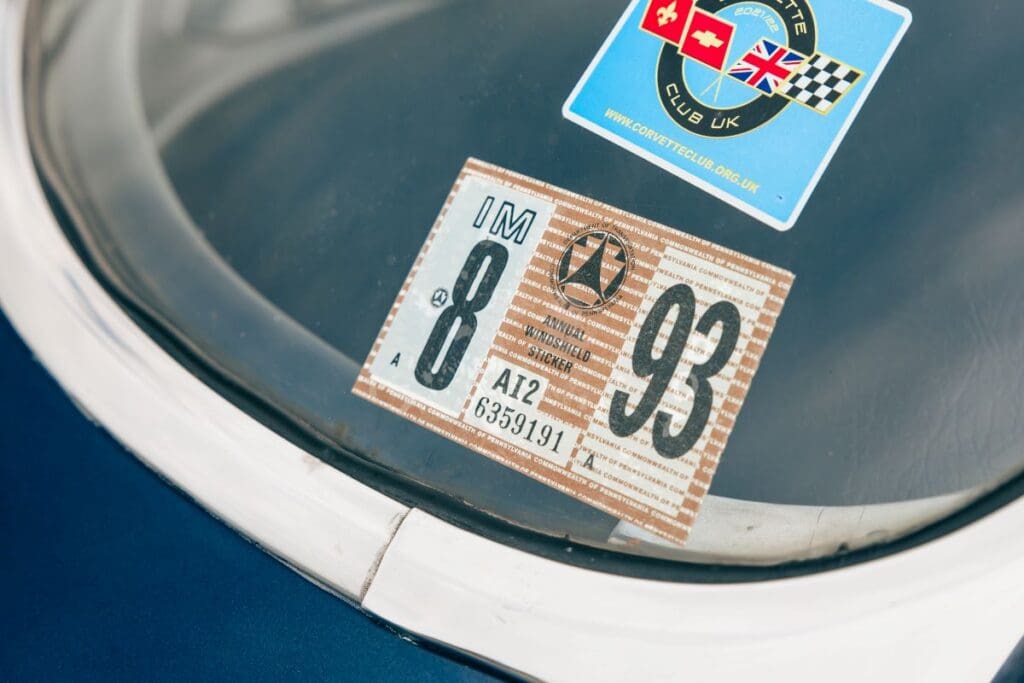
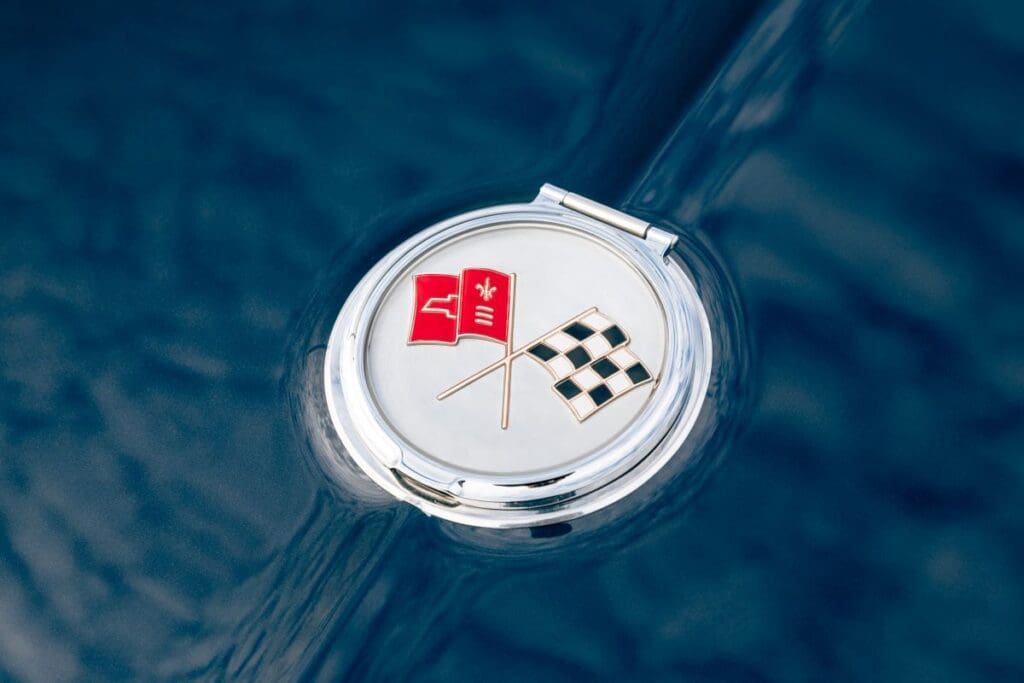
Mick doesn’t know the back story of his ’Vette since it didn’t come with much history. “I understand it came into the UK around February 2016 as a project and there’s an inspection sticker on the windscreen that suggests it was in Pennsylvania in 1993. I suspect someone imported the car, but then found it was more work to finish than they realised. I know it was restored at a UK Corvette specialist and I understand the previous owner bought it from them, then returned it for some further work.”
We do know the Corvette was built at the St Louis plant and is among the first 12,000 made from a production total of 10,594 coupes and 10,919 roadsters, with 83% of those having four-speed manual transmission. Although repainted as part of its rebuild, the Corvette left the factory in this shade of Daytona Blue.
“I was told it wasn’t a restoration; it just started out as work to put things right and then they found a few more things that needed doing. Mine’s effectively the base model Corvette with the 250bhp engine,” explains Mick, “although it’s had work including a new intake manifold and Holley four-barrel carburettor that’s given it more like 300bhp. It’s certainly very quick. I usually like my cars as original as they can be, but it’s had the vinyl interior upgraded to leather and Turbine wheels added. Although it is still the matching-numbers engine, the brakes have been updated to powered discs and it now has power steering. There are Bilstein adjustable shocks too, the whole suspension was re-bushed as part of it being completely rebuilt with Moog ball joints, uprated trailing arms and Grand Touring spec coil springs. So, yes, it is upgraded from stock, but that’s mainly changes made under the surface – it doesn’t look obviously modified. My 1973 Corvette had disc brakes and adding power assistance is one of the best things I’ve ever done…”
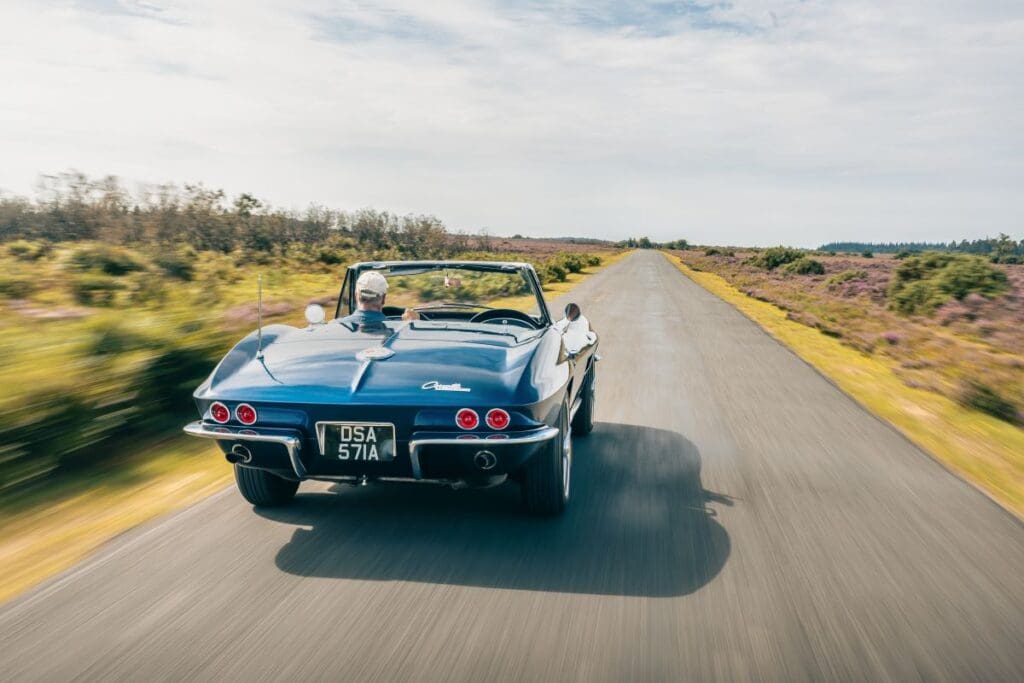
All change
In 1963, the Corvette model celebrated its 10th birthday. The ’62 cars had an X-frame chassis that dated back to 1953 and a body aged seven; so it was overdue for a change. Being such a low volume production vehicle with few direct competitors – especially since Thunderbird had gone to four seats – Chevrolet had delayed developing an all-new ’Vette. But Chevy also knew Ford had a threatening new rival in the AC Cobra, which was set to appear in late 1962. GM briefly considered a mid-engined Corvette – even toying with making its full-sized Chevrolet sedans mid-engined too – before settling on a front-mounted V8 in an all-new chassis.
The engine and passenger compartment were set as far back as possible, with a centre of gravity four inches lower than the previous Corvette. For the first time, weight bias was 53% to the rear – the 1962s had been 51/49 – and there was an excellent independent rear suspension resulting in 30% less unsprung weight. Developing that IRS within budget was possible because most of the front suspension came from the passenger-car range, albeit with tweaks. Testing proved the new suspension to be five seconds a lap faster at Sebring. On top of this new chassis was a frankly stunning body with its origins in the 1957 ‘Q Corvette’, stylist Bill Mitchell’s own Corvette race car and various styling exercises including the XP-700 show car. The rear-end design had already been borrowed for the 1961 Corvette, but now Mitchell and his team were using innovative computer-aided design (CAD) systems to test the aerodynamics.
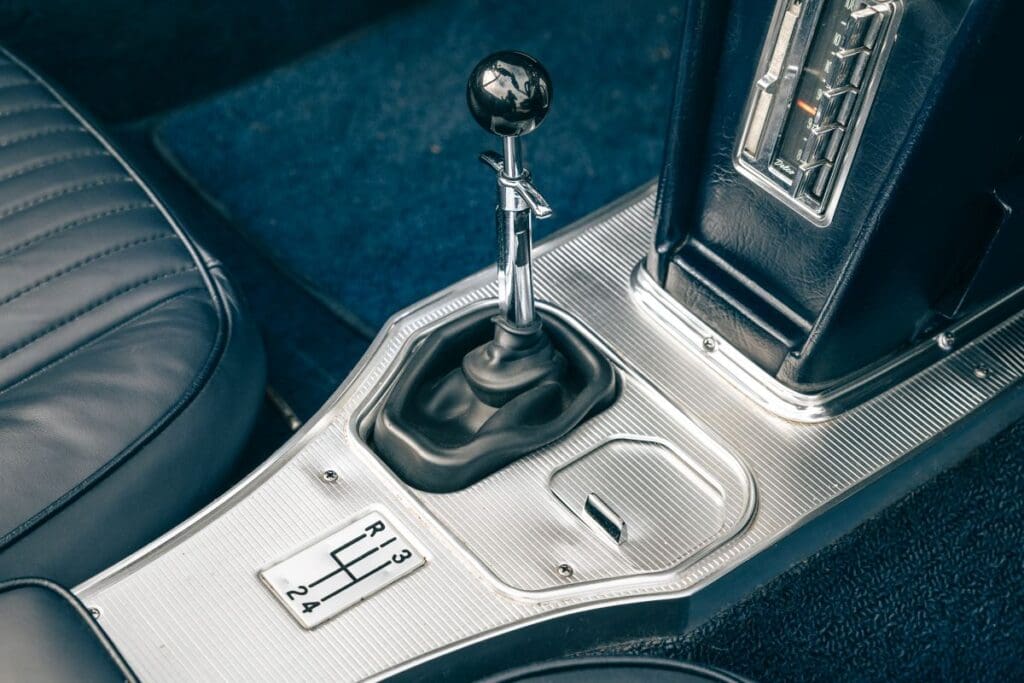
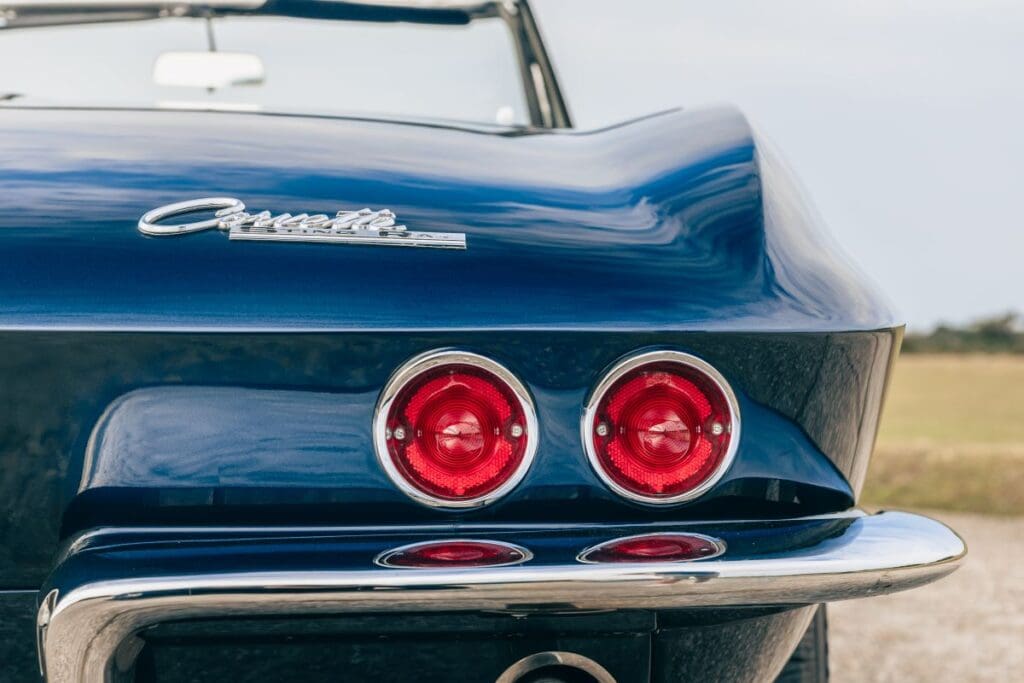
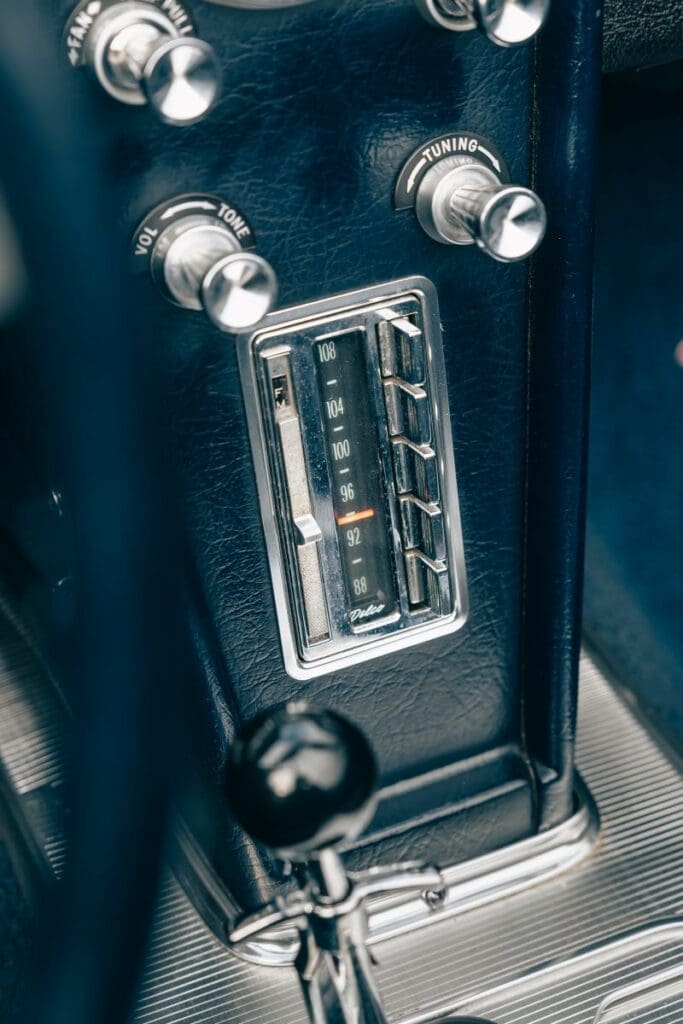
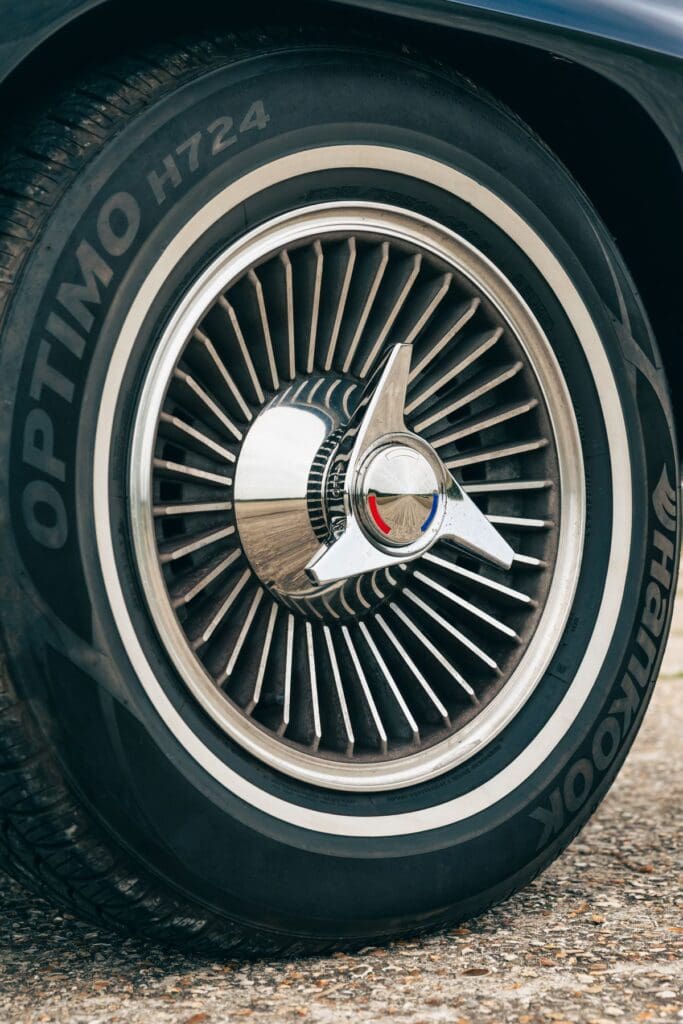
The result was jaw-dropping; sharp, razor-edged styling with a beltline crease around the entire car made possible by pop-up headlights, last used on an American car by DeSoto in 1942. Chevrolet engineers tested five different headlight mechanisms before finding one reliable enough to fit. A steel birdcage, bonded under the glass fibre body, added strength and impact-resistance while requiring less glass fibre than previous cars. The weight was 13lb above the 1962 cars, purely due to a larger fuel tank and those headlight motors. However, disc brakes as standard had to wait until 1965 and there was now no separate boot, since locating the spare tyre behind the rear axle meant putting the fuel tank above it.
Along with this new Corvette came a new model: name Sting Ray; badged Stingray from 1969. GM described it as having “a European heritage, but with an American biography”. Also new for 1963 were optional leather upholstery, air conditioning (introduced late in the model run, so only fitted to 1.3% of production) and knock-off wheels. Plus, there was now a Corvette coupe (which GM called a fastback) with a one-year-only split rear window which was the one aspect of the design that everyone but Mitchell hated. So many owners had that centre spine removed that Chevy began offering a one-piece window replacement part even before the 1964 cars were announced.
The 1963 Corvette was nothing less than a sensation and across America, drive-in restaurants would empty as people ran over to look whenever one parked. At a starting price of $4037 for the coupe and another $220 on top for the convertible, it was twice the price of a Nova or Corvair, so remained fairly exclusive. Both those models outsold the Corvette 10 times over, but although Chevy had an all-new range of great cars on display in its dealerships on launch day, September 28, 1962, it was the Corvette that most people came to see and dreamed of driving.
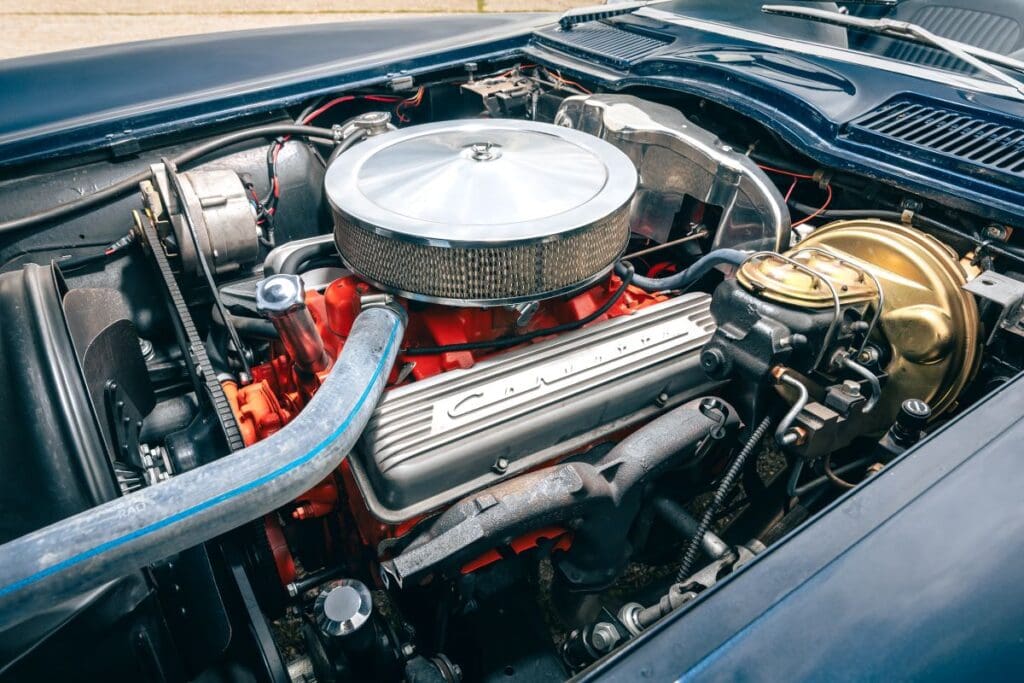
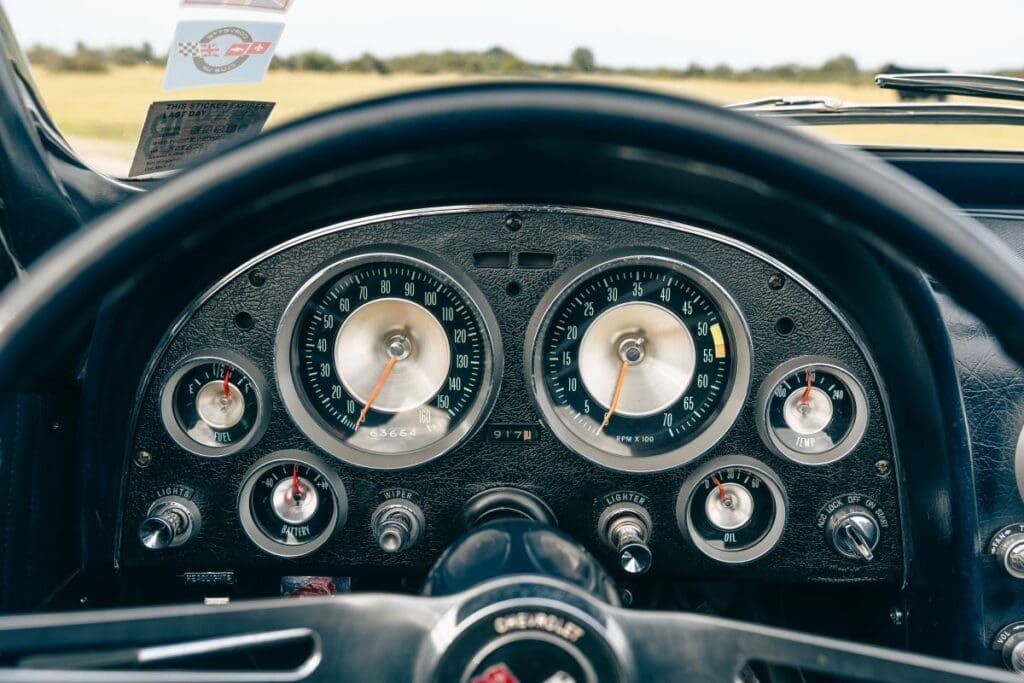
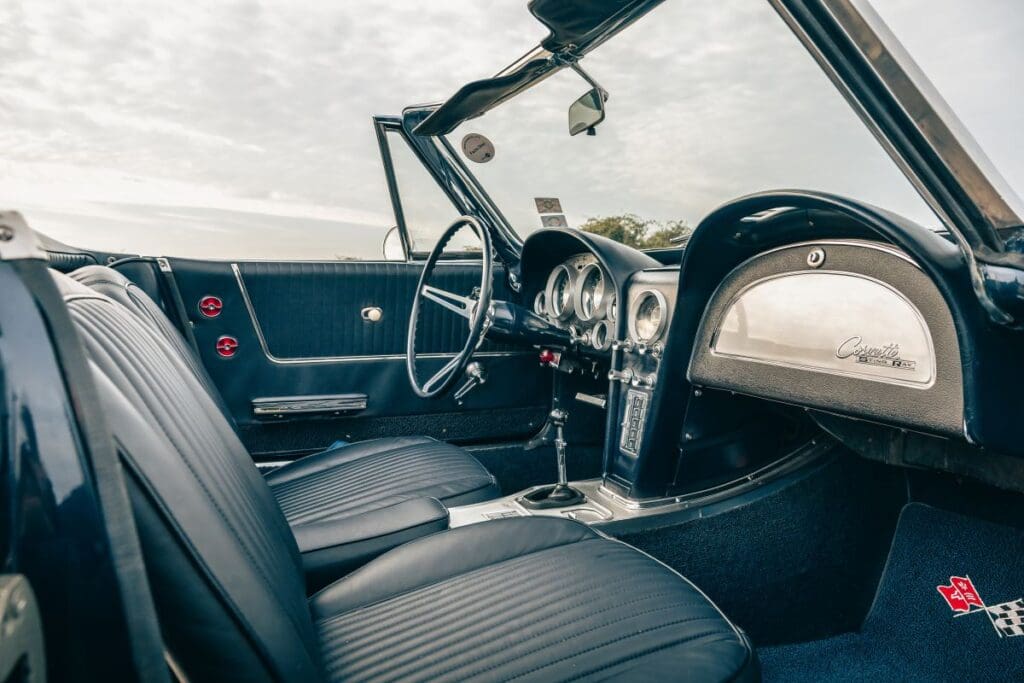
Almost perfect
“It’s proved very pleasant to own, although there have been a couple of minor issues,” admits Mick. “I took it to a show at Beaulieu National Motor Museum, and at the end of a very hot day it wouldn’t fire. The AA got it going with a tow and it turned out the main starter cable to the battery had frayed, so that was an easy repair. The only other issue has been with the headlights; the passenger one was flashing on and off on dipped/sidelights, but again that was just a loose connection. At least they were popping up and down okay.
“I’ve always loved the shape and the noise of the 1960s Corvettes. I’d seen various American cars on television and admired them, but my 1973 Corvette was my first Yank. The ’73 is still very original; an automatic California car that still has all the smog gear fitted, which is probably quite unusual. Compared to the 1963, the ’73 is easy to drive. The ’63 feels older and you can’t rush the gearchanges, while my seven-speed 2018 Corvette is just lovely. The 1963 does drive well though; it feels confident.
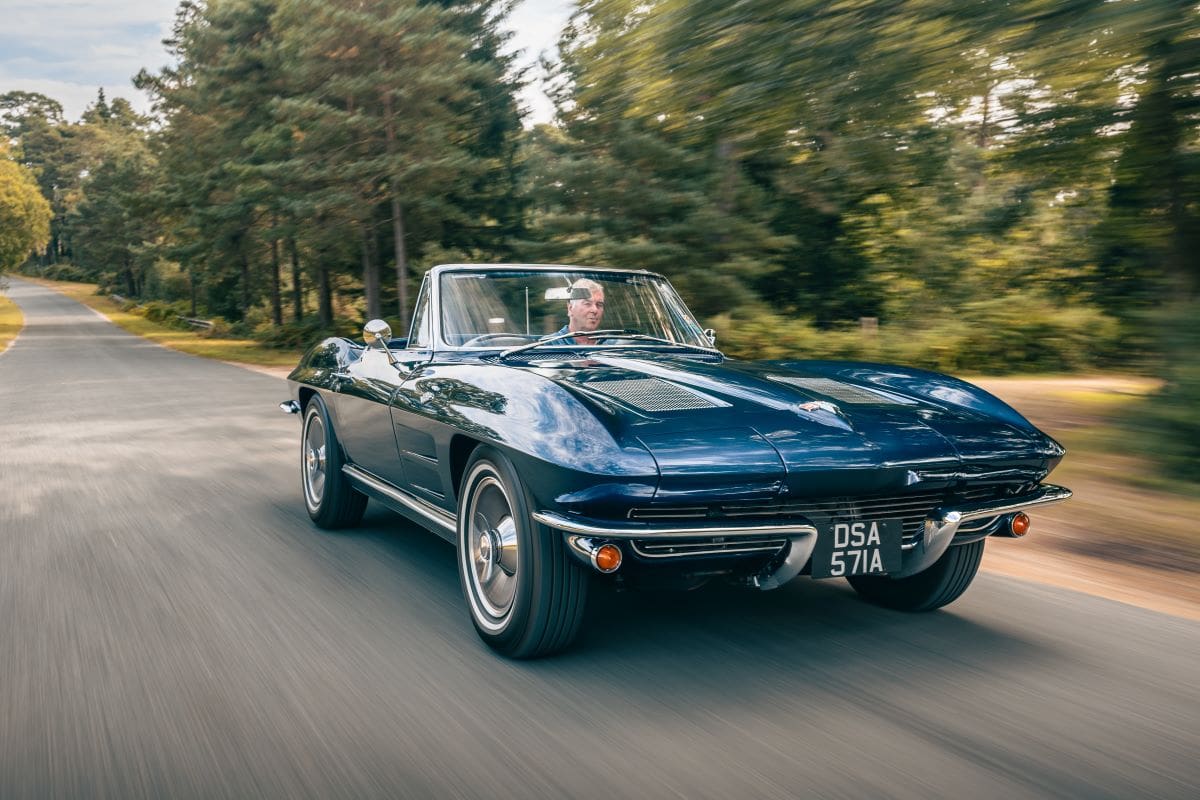
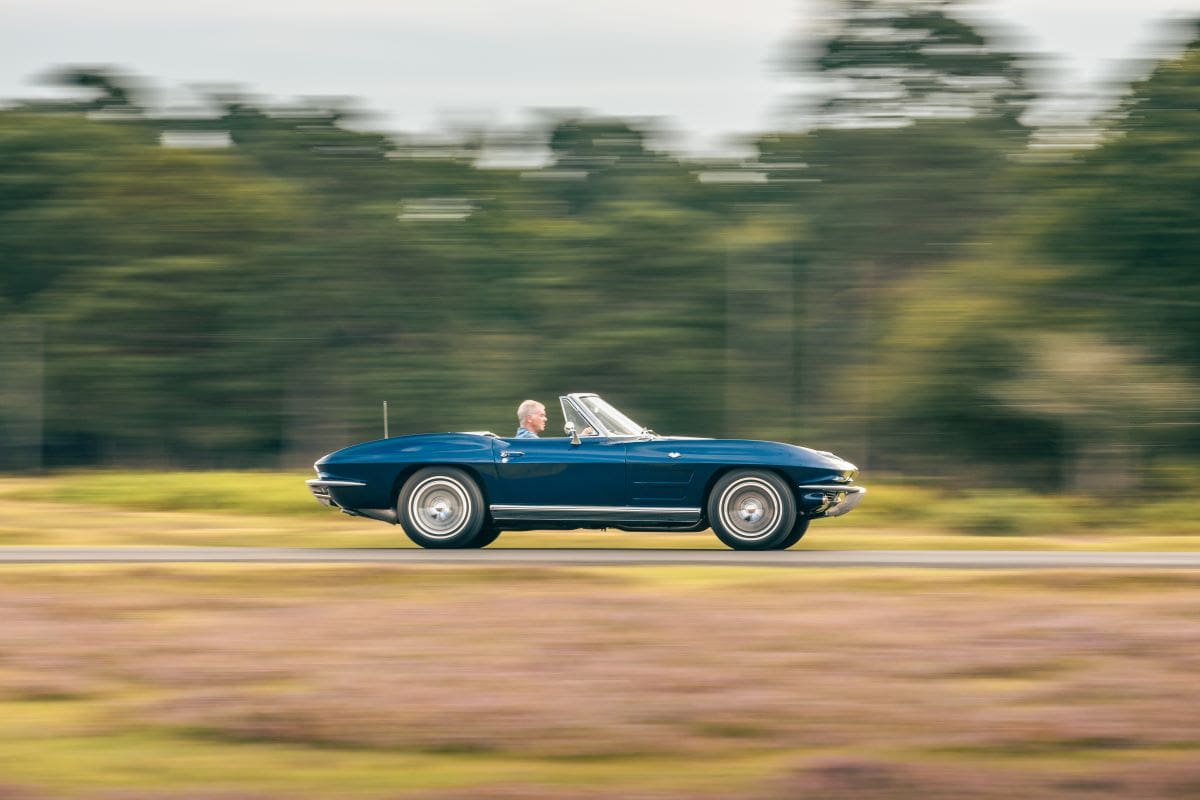
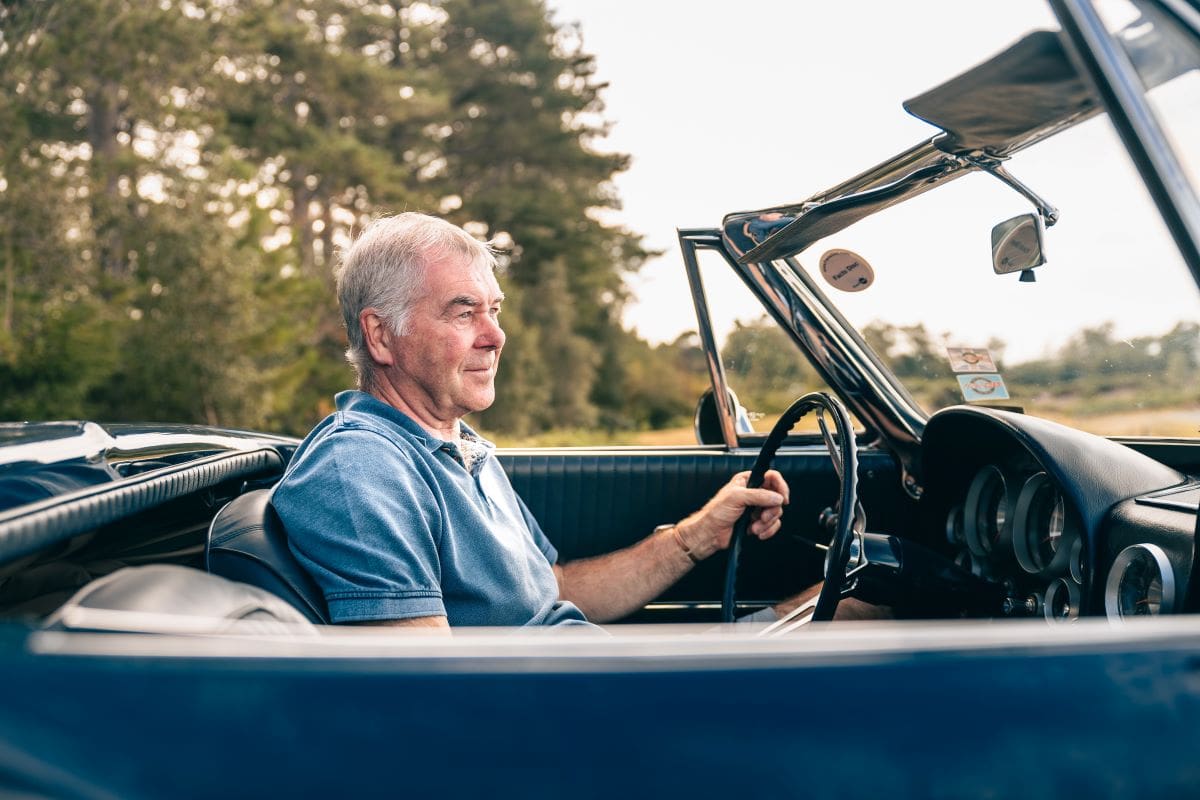
“It isn’t perfect,” continues Mick, “it has a few dings and the chrome is not concours, but that’s because I use it. This is a car I drive. If you’re not going to use a car as intended, then you might as well save all that money on ownership and instead just have a picture of the car on your wall! I can’t see me ever selling it. I really fancy a C1 Corvette as well, but then I took the Grand Sport to the Corvette Nationals and got passed by a big block 1965 or ’66 and really had to fight to keep up. So, it’s also very tempting to find a 396 or 427 Corvette…
“The only small niggle with the Sting Ray is the gear lever,” laughs Mick. “The handle is the type you lift to get it into reverse and as I drive along it rattles. Someone wrapped it in black tape which I removed and the noise now drives me mad! I wonder if they all do that? I can’t imagine the first person to buy one drove it home from the dealership and didn’t take it straight back to complain… does anyone know how to fix it? It’s honestly the only thing I don’t like about the car…” Any clues?!
